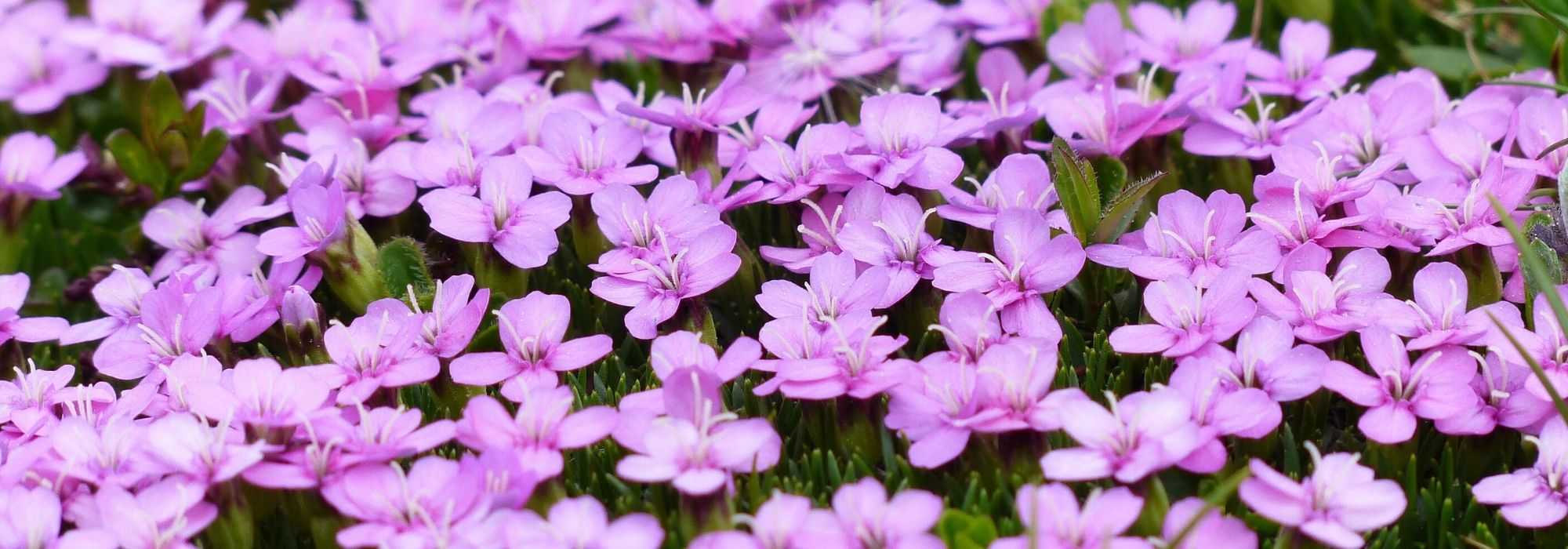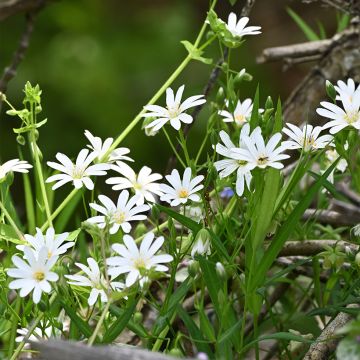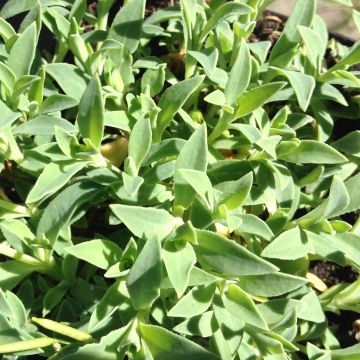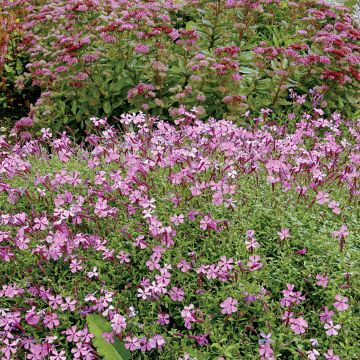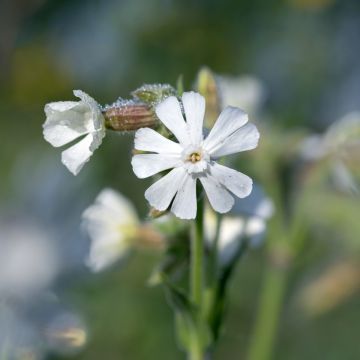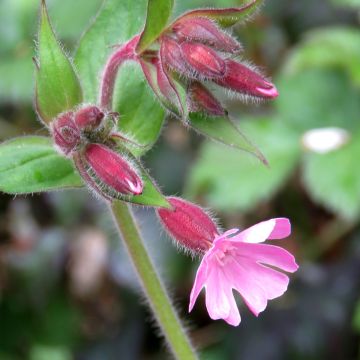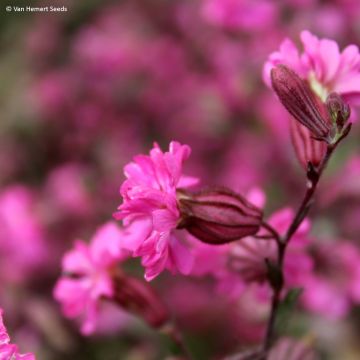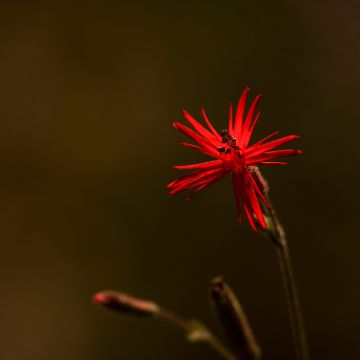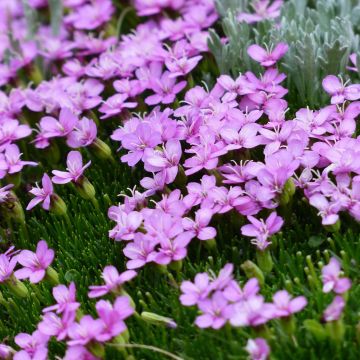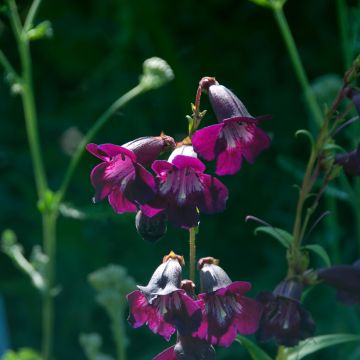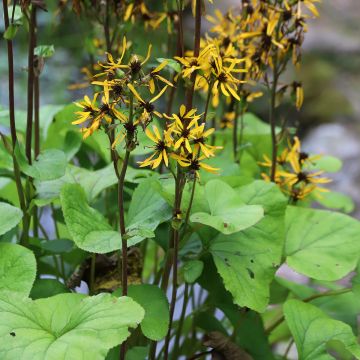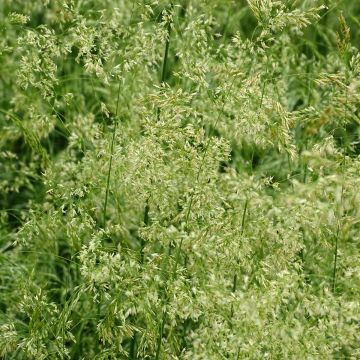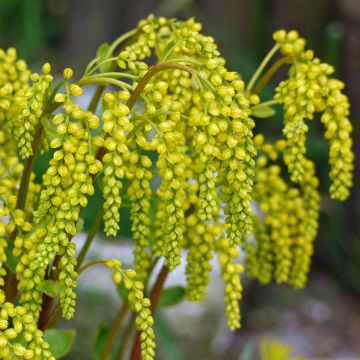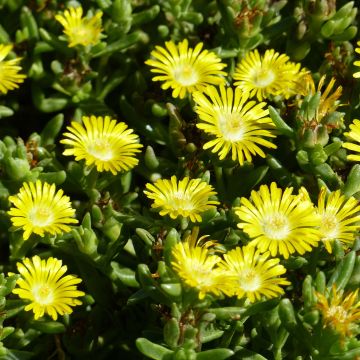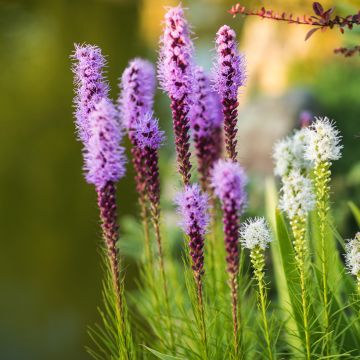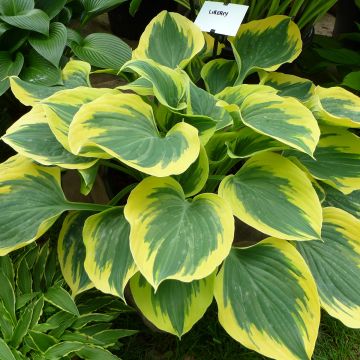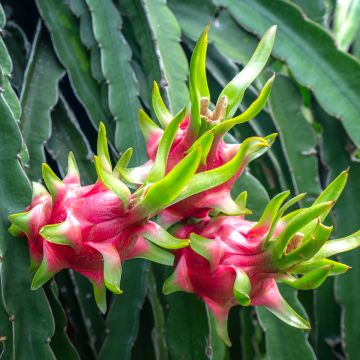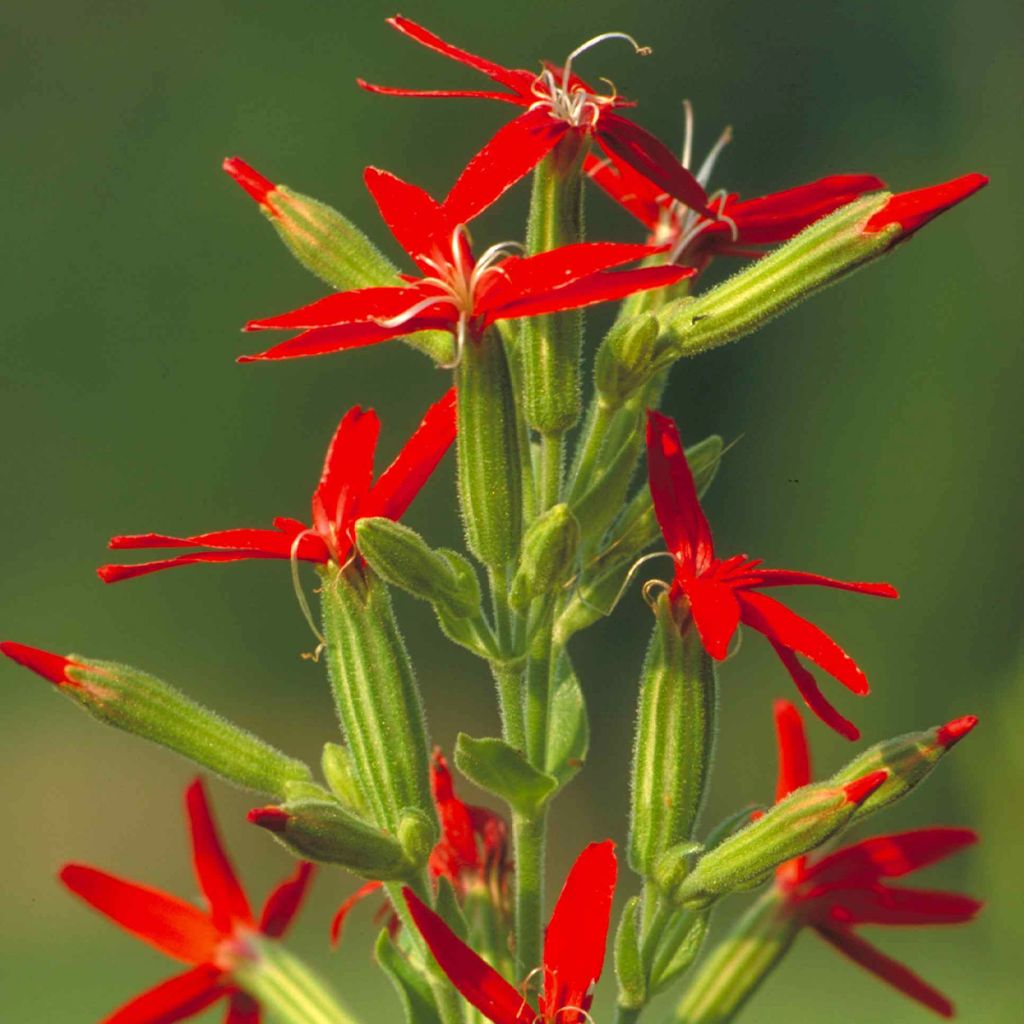

Silene regia - Silène royal
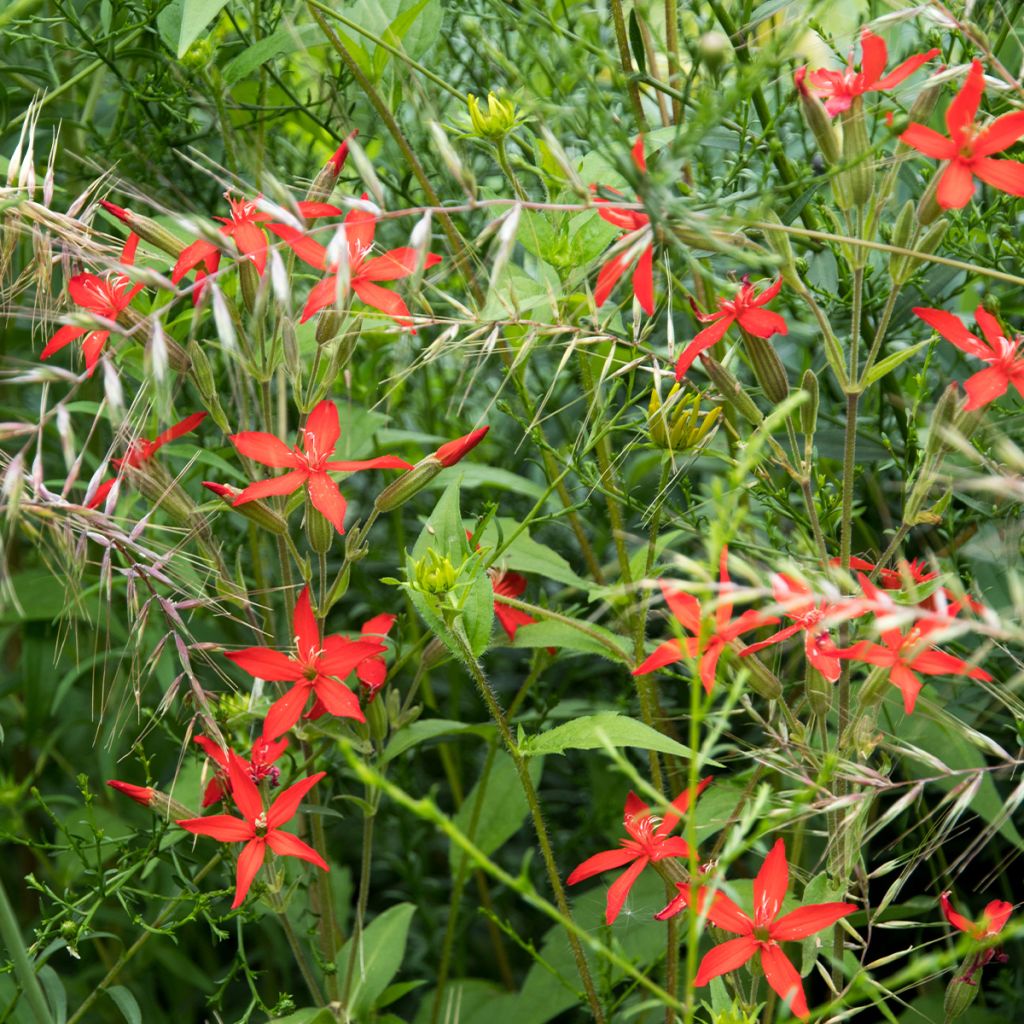

Silene regia - Silène royal
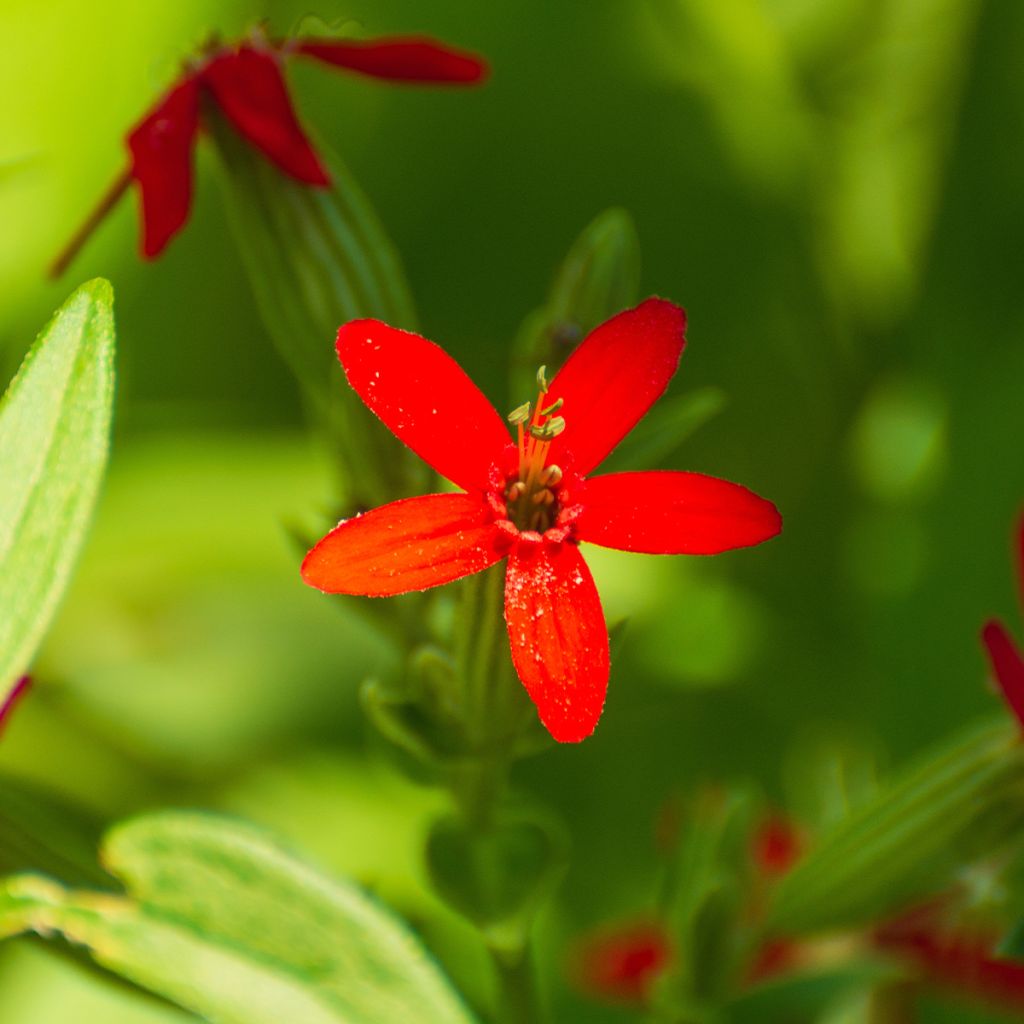

Silene regia - Silène royal
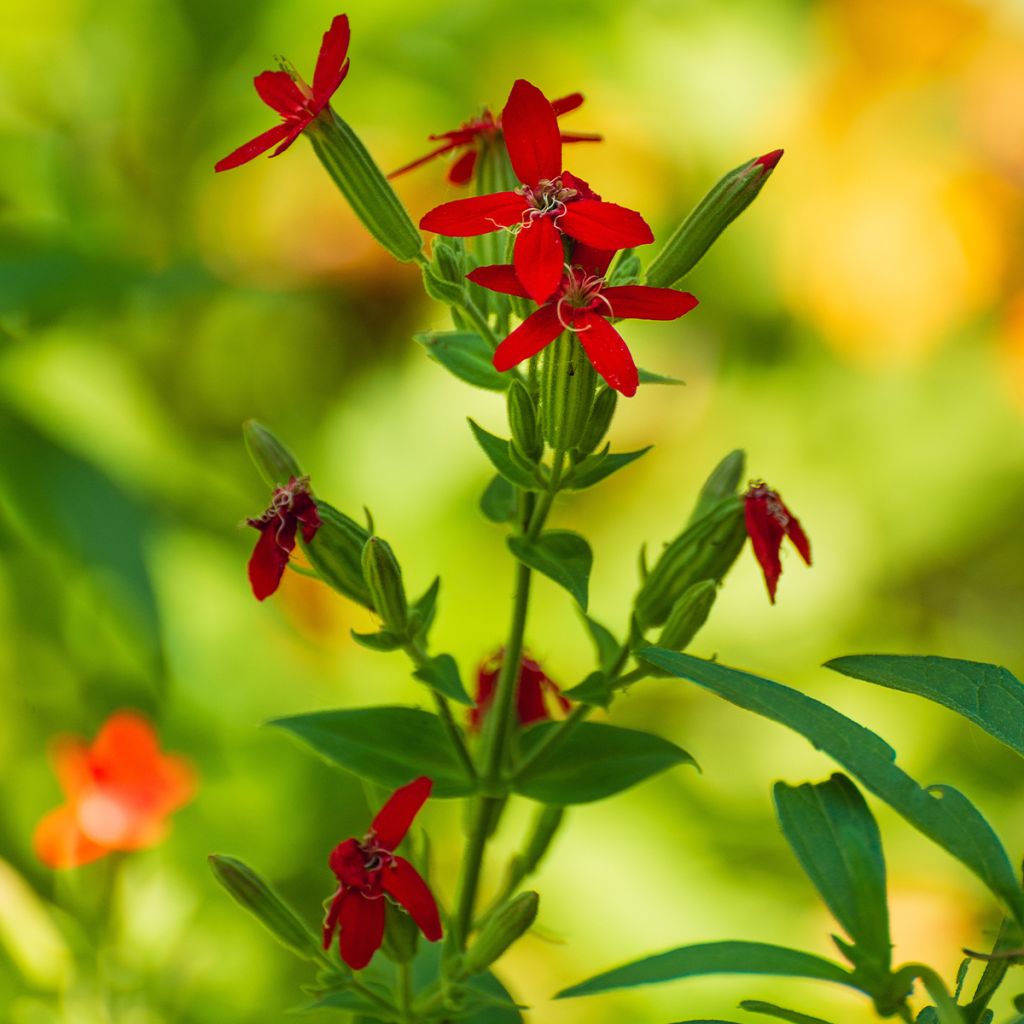

Silene regia - Silène royal
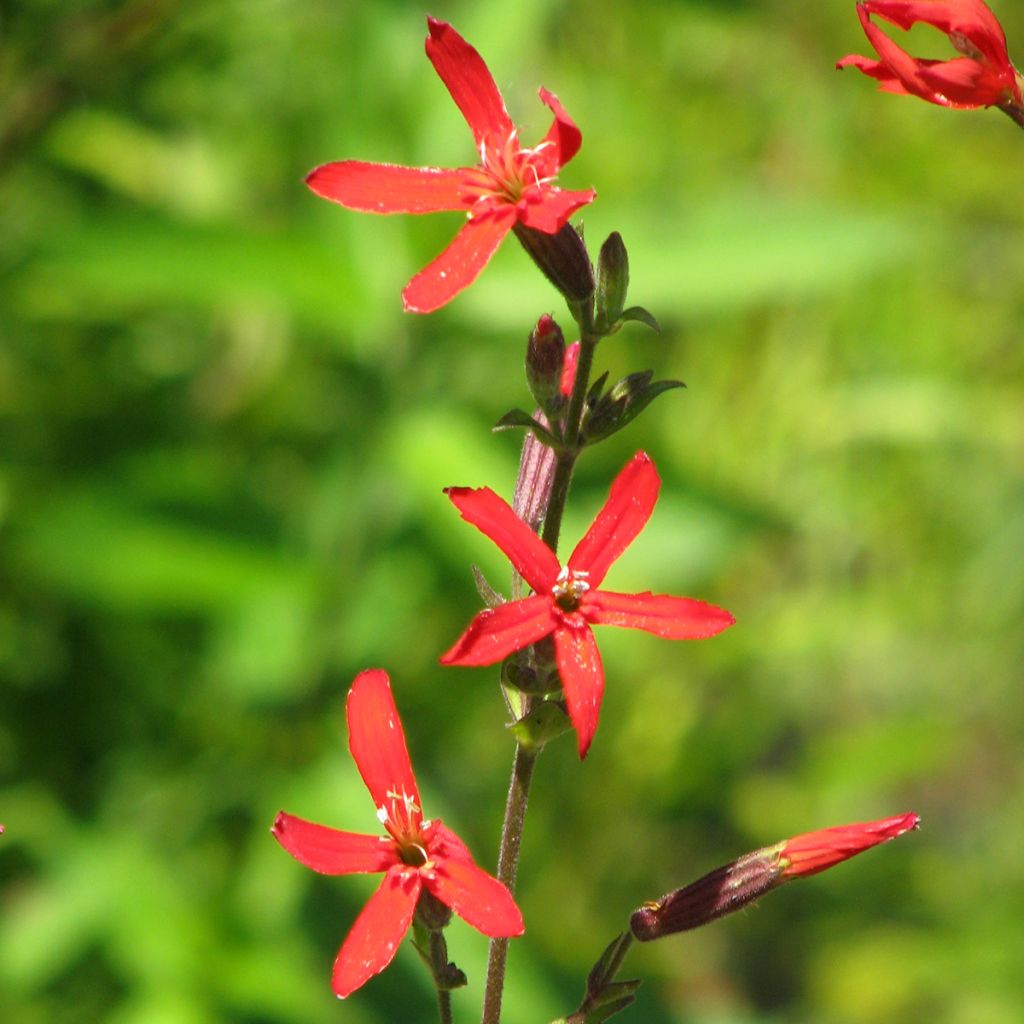

Silene regia - Silène royal
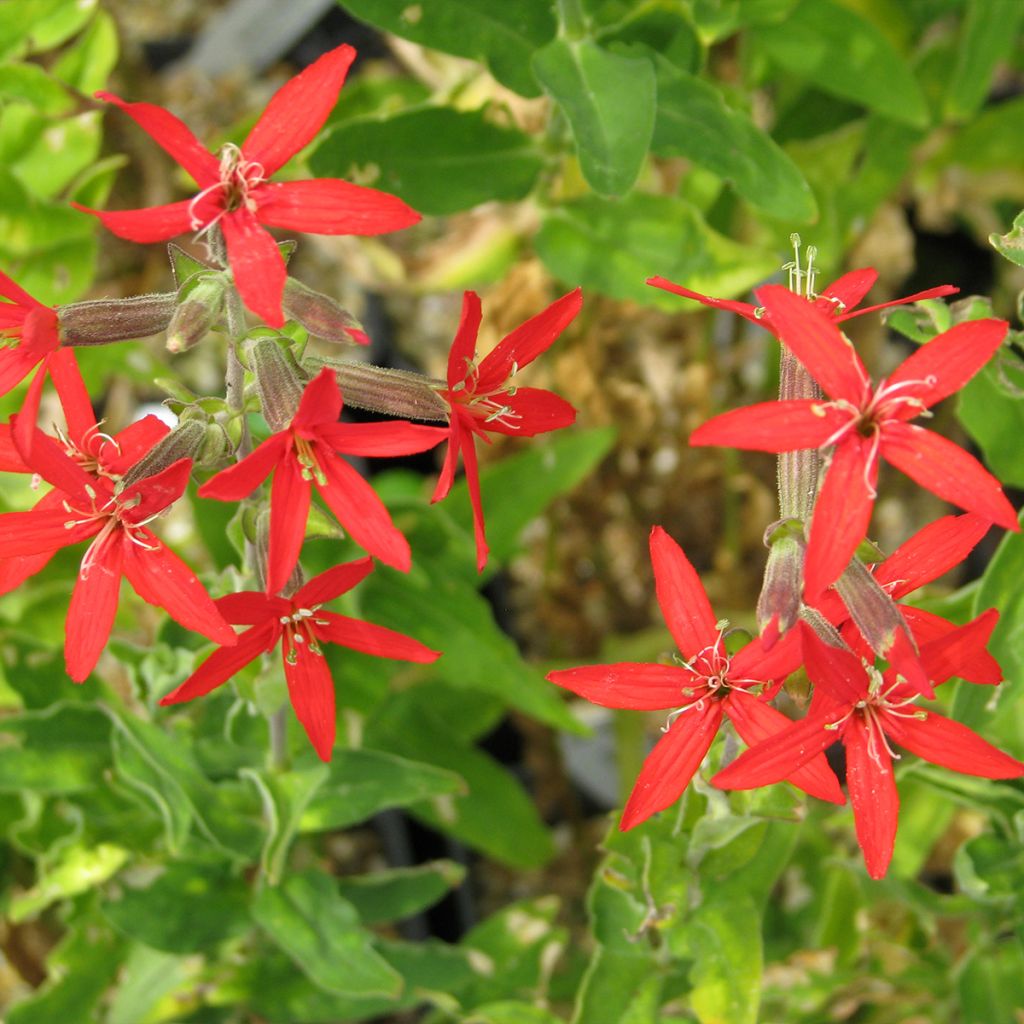

Silene regia - Silène royal
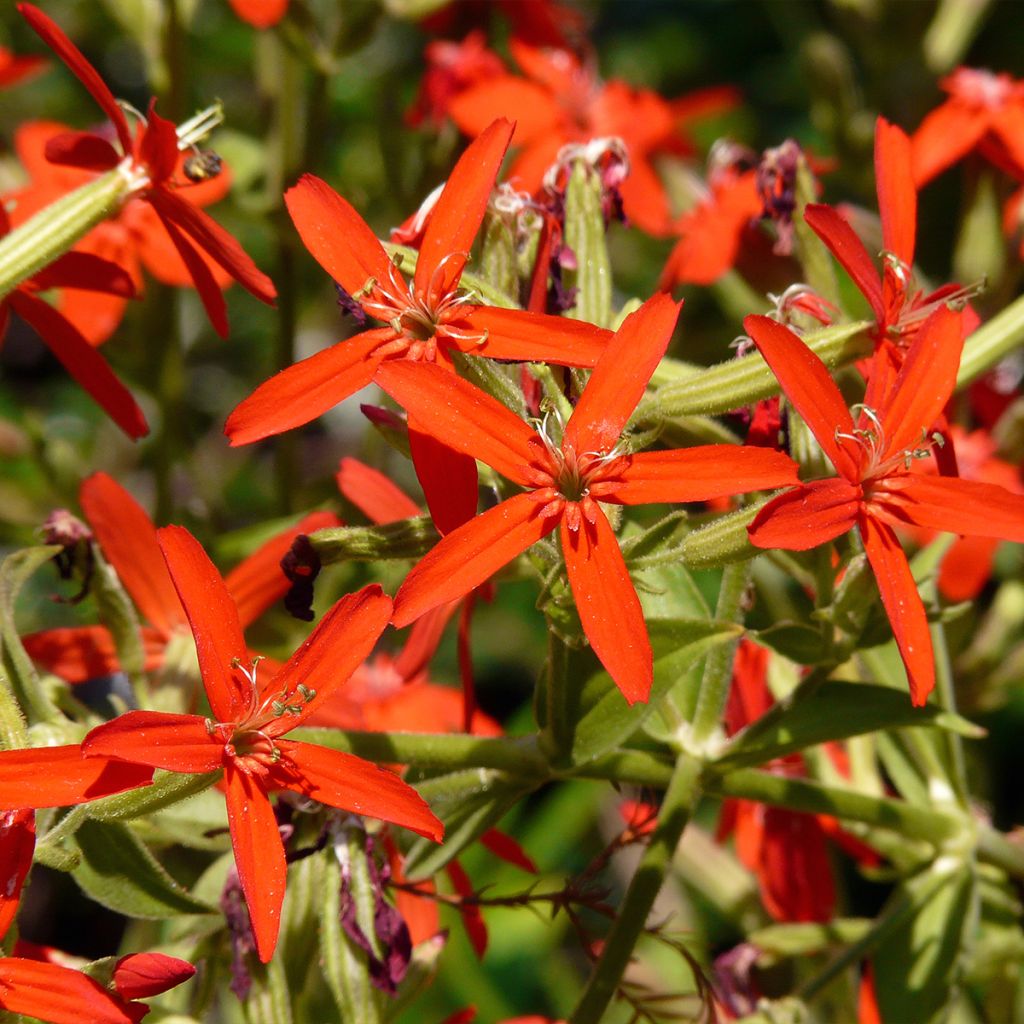

Silene regia - Silène royal
Silene regia
Silene regia
Catchfly
I couldn't really pass by it, I love scarlet red. It arrived at the end of 22 or in 23, I'm not quite sure anymore. Alas! It seems that it's not a good fit for my garden with acidic and well-draining soil, not to mention we had eight months of rain. In short, it really struggled to grow, if we can even call this vague stretching a shoot, and then powdery mildew hit it, most of the time, it's not worse than acne, it might not necessarily have it the following year. I will wait one more year. But the slugs discovered it! Farewell short-lived silene... Meanwhile, my dream of scarlet red will rather come to life in a dahlia.
Philippe 87, 23/09/2024
Special offer!
Receive a €20 voucher for any order over €90 (excluding delivery costs, credit notes, and plastic-free options)!
1- Add your favorite plants to your cart.
2- Once you have reached €90, confirm your order (you can even choose the delivery date!).
3- As soon as your order is shipped, you will receive an email containing your voucher code, valid for 3 months (90 days).
Your voucher is unique and can only be used once, for any order with a minimum value of €20, excluding delivery costs.
Can be combined with other current offers, non-divisible and non-refundable.
Home or relay delivery (depending on size and destination)
Schedule delivery date,
and select date in basket
This plant carries a 12 months recovery warranty
More information
We guarantee the quality of our plants for a full growing cycle, and will replace at our expense any plant that fails to recover under normal climatic and planting conditions.
Does this plant fit my garden?
Set up your Plantfit profile →
Description
Silene regia, or royal catchfly, is a tall and beautiful North American species with scarlet flowers. This perennial forms a clump of stems covered in velvety green leaves. In summer, tall and slender stems emerge from the foliage, bearing stunning clusters of delicate, striking red flowers. This catchfly has a place in wildflower gardens or English-style gardens, in borders or large beds. Give it a sunny or partially shaded position in the afternoon in a warm climate and it will look superb with American grasses such as Panicum, Schizachyriums, or Andropogons!
Silene regia belongs to the Caryophyllaceae family. It is a wild plant native to tall grass prairies in the centre of the United States where it has become rare due to the gradual disappearance of its habitat. In nature, it is found in prairies, edges, roadsides, and pastures, often on dry and rocky soils. This perennial quite rapidly reaches a mature height of about 1.20 m (4ft) (sometimes more) and a width of 50 cm (20in). It develops a fleshy taproot that goes deep into the soil. In spring, several upright stems emerge from the base, adorned with velvety oval to lanceolate leaves up to 12 centimetres (5 inches) long at the bottom of the stem. Flowering occurs from June to August, depending on the climate. The inflorescence develops at the top of the stems and consists of numerous flowers. Each flower measures about 5 cm (2in) in diameter and is composed of a tube that widens into 5 narrow, vibrant red lobes. The vegetation dries out in autumn.
Royal catchfly is not difficult to grow as long as it has well-drained soil. It is resistant to the cold, and drought-resistant once deeply rooted. There are many ways to use it, whether in a large wildflower bed or an English-style mixed border. Its scarlet flowering is perfectly complemented by the wild charm of grasses, ,blue Perovskias or bright yellow goldenrods. Summer blooming asters will also make lovely companions, or echinaceas, thistles, or perennial sunflowers, like Helianthus salicifolius.
Silene regia in pictures
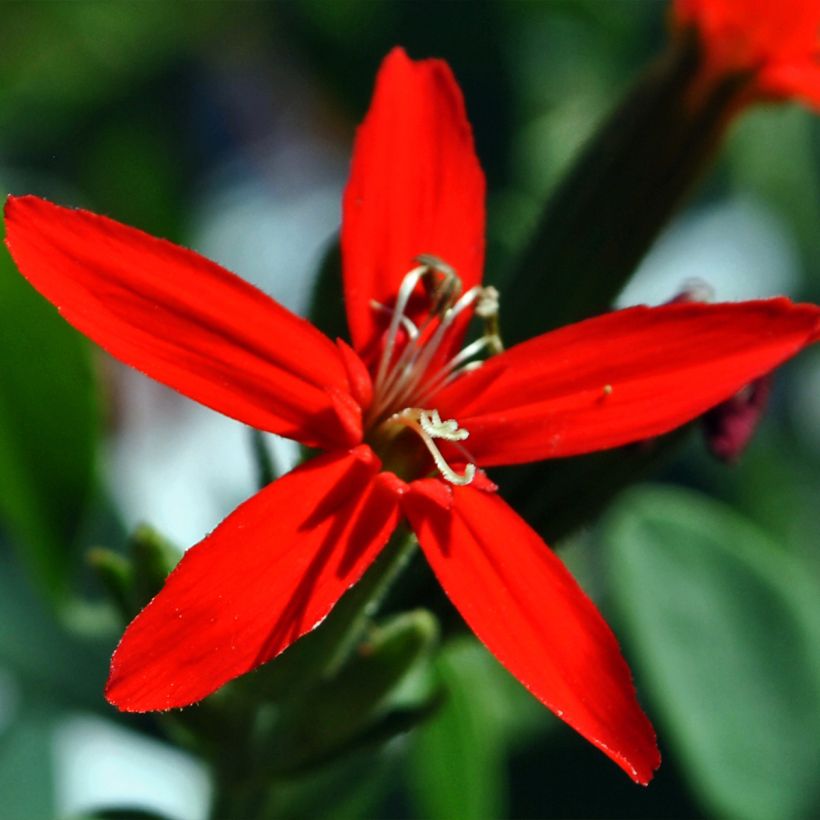

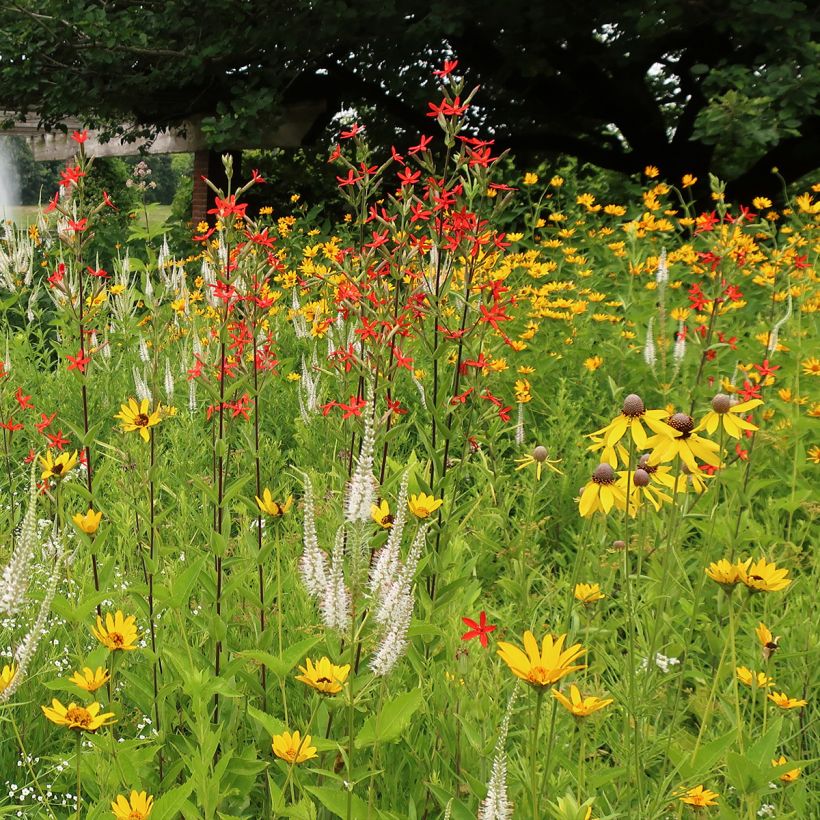

Flowering
Foliage
Plant habit
Botanical data
Silene
regia
Caryophyllaceae
Catchfly
North America
Other Silene - Campion
View all →Planting and care
Plant Silene regia in ordinary, but properly drained soil. It is undemanding but prefers sandy or stony soils, not too poor and deep enough to allow it to root well. Once established, the plant proves quite drought-resistant. Choose a sunny spot, even partially shaded in the afternoon in hotter regions. The royal catchfly has no specific enemies.
Planting period
Intended location
Care
Planting & care advice
-
, onOrder confirmed
Reply from on Promesse de fleurs
Similar products
Haven't found what you were looking for?
Hardiness is the lowest winter temperature a plant can endure without suffering serious damage or even dying. However, hardiness is affected by location (a sheltered area, such as a patio), protection (winter cover) and soil type (hardiness is improved by well-drained soil).

Photo Sharing Terms & Conditions
In order to encourage gardeners to interact and share their experiences, Promesse de fleurs offers various media enabling content to be uploaded onto its Site - in particular via the ‘Photo sharing’ module.
The User agrees to refrain from:
- Posting any content that is illegal, prejudicial, insulting, racist, inciteful to hatred, revisionist, contrary to public decency, that infringes on privacy or on the privacy rights of third parties, in particular the publicity rights of persons and goods, intellectual property rights, or the right to privacy.
- Submitting content on behalf of a third party;
- Impersonate the identity of a third party and/or publish any personal information about a third party;
In general, the User undertakes to refrain from any unethical behaviour.
All Content (in particular text, comments, files, images, photos, videos, creative works, etc.), which may be subject to property or intellectual property rights, image or other private rights, shall remain the property of the User, subject to the limited rights granted by the terms of the licence granted by Promesse de fleurs as stated below. Users are at liberty to publish or not to publish such Content on the Site, notably via the ‘Photo Sharing’ facility, and accept that this Content shall be made public and freely accessible, notably on the Internet.
Users further acknowledge, undertake to have ,and guarantee that they hold all necessary rights and permissions to publish such material on the Site, in particular with regard to the legislation in force pertaining to any privacy, property, intellectual property, image, or contractual rights, or rights of any other nature. By publishing such Content on the Site, Users acknowledge accepting full liability as publishers of the Content within the meaning of the law, and grant Promesse de fleurs, free of charge, an inclusive, worldwide licence for the said Content for the entire duration of its publication, including all reproduction, representation, up/downloading, displaying, performing, transmission, and storage rights.
Users also grant permission for their name to be linked to the Content and accept that this link may not always be made available.
By engaging in posting material, Users consent to their Content becoming automatically accessible on the Internet, in particular on other sites and/or blogs and/or web pages of the Promesse de fleurs site, including in particular social pages and the Promesse de fleurs catalogue.
Users may secure the removal of entrusted content free of charge by issuing a simple request via our contact form.
The flowering period indicated on our website applies to countries and regions located in USDA zone 8 (France, the United Kingdom, Ireland, the Netherlands, etc.)
It will vary according to where you live:
- In zones 9 to 10 (Italy, Spain, Greece, etc.), flowering will occur about 2 to 4 weeks earlier.
- In zones 6 to 7 (Germany, Poland, Slovenia, and lower mountainous regions), flowering will be delayed by 2 to 3 weeks.
- In zone 5 (Central Europe, Scandinavia), blooming will be delayed by 3 to 5 weeks.
In temperate climates, pruning of spring-flowering shrubs (forsythia, spireas, etc.) should be done just after flowering.
Pruning of summer-flowering shrubs (Indian Lilac, Perovskia, etc.) can be done in winter or spring.
In cold regions as well as with frost-sensitive plants, avoid pruning too early when severe frosts may still occur.
The planting period indicated on our website applies to countries and regions located in USDA zone 8 (France, United Kingdom, Ireland, Netherlands).
It will vary according to where you live:
- In Mediterranean zones (Marseille, Madrid, Milan, etc.), autumn and winter are the best planting periods.
- In continental zones (Strasbourg, Munich, Vienna, etc.), delay planting by 2 to 3 weeks in spring and bring it forward by 2 to 4 weeks in autumn.
- In mountainous regions (the Alps, Pyrenees, Carpathians, etc.), it is best to plant in late spring (May-June) or late summer (August-September).
The harvesting period indicated on our website applies to countries and regions in USDA zone 8 (France, England, Ireland, the Netherlands).
In colder areas (Scandinavia, Poland, Austria...) fruit and vegetable harvests are likely to be delayed by 3-4 weeks.
In warmer areas (Italy, Spain, Greece, etc.), harvesting will probably take place earlier, depending on weather conditions.
The sowing periods indicated on our website apply to countries and regions within USDA Zone 8 (France, UK, Ireland, Netherlands).
In colder areas (Scandinavia, Poland, Austria...), delay any outdoor sowing by 3-4 weeks, or sow under glass.
In warmer climes (Italy, Spain, Greece, etc.), bring outdoor sowing forward by a few weeks.






























